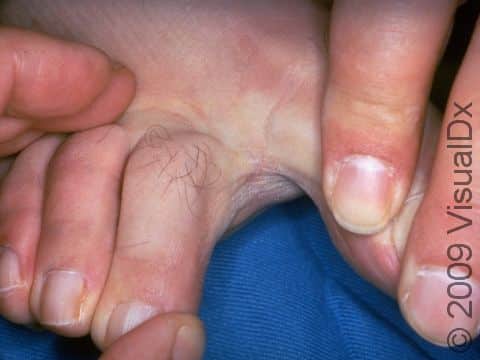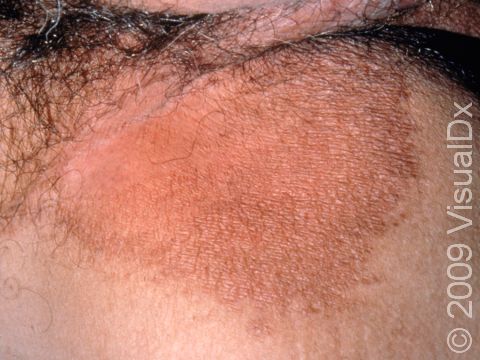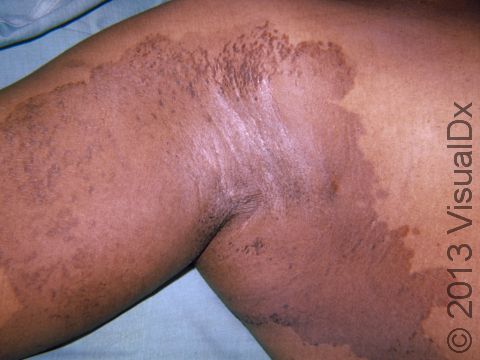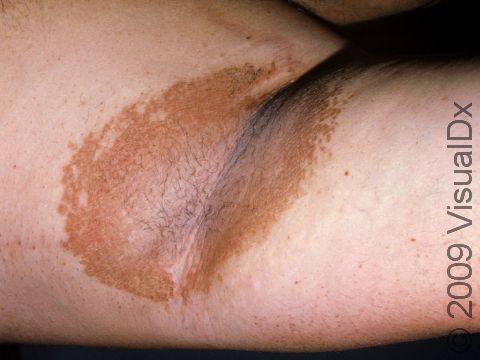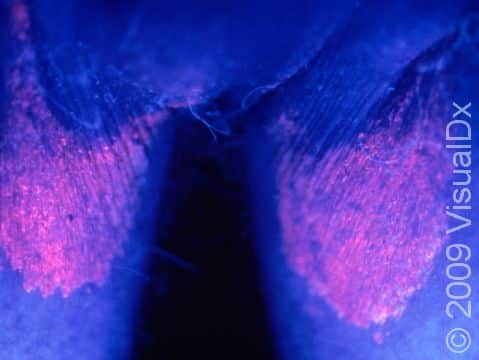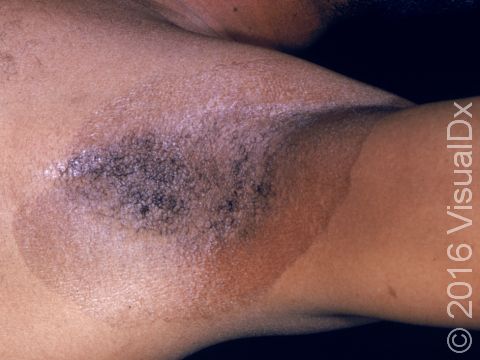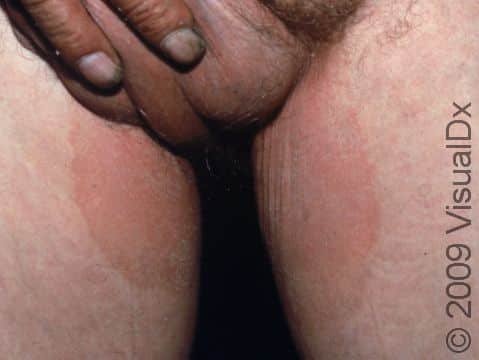Erythrasma
Erythrasma is a common skin condition caused by infection with the bacterium Corynebacterium minutissimum. It appears as slowly enlarging patches of brown or pink, slightly scaly skin, usually in the skin folds, but other skin surfaces can be affected. Some people get erythrasma once, while others seem to get it over and over. Sometimes there are no symptoms other than the rash, and sometimes the affected areas itch.
Who's At Risk?
Erythrasma can affect people of any age or race / ethnicity, but it is more common among individuals who live in warm, humid climates, especially tropical regions. It is also more common in older individuals. Men and women are equally affected, but men tend to have infection in the groin more often than women.
The following conditions may predispose people to erythrasma:
- Diabetes
- Obesity
- Excessive sweating
- Poor hygiene
- A weakened immune system
Signs & Symptoms
Erythrasma appears as one or more patches (flat, smooth areas of skin larger than a thumbnail) of brown, pink, or red, slightly scaly skin. It is often symmetrical (eg, affecting both underarms or both sides of the groin). The border of erythrasma is well-defined, meaning there is a sharp border between the affected areas and the surrounding normal skin. Over time, the patches fade to lighter tan or brown.
Erythrasma is typically located in moist body folds such as:
- The underarms.
- The groin and inner thighs.
- Between the toes, especially between the 4th and 5th toes.
Less commonly, erythrasma can be found in the buttock crevice or in the folds underneath the breasts. In certain individuals, especially in those with diabetes, the infection can become widespread and can involve the trunk, arms, and legs.
Erythrasma usually causes no symptoms, but some people report mild itching or burning, especially in the groin area.
Self-Care Guidelines
If you suspect you have erythrasma, you can try:
- Gently washing the involved area with antibacterial soap (eg, Dial antibacterial bar soap), which can help treat active infections and prevent future infections.
- Keeping the involved area(s) dry.
- Wearing loosely fitting clothing.
Treatments
Once the diagnosis of erythrasma is established, your medical professional may try one of the following treatments:
- Topical antibiotic lotions such as erythromycin or clindamycin.
- Oral antibiotics such as erythromycin.
Visit Urgency
If the involved skin does not improve with self-care measures, see your medical professional.
References
Bolognia J, Schaffer JV, Cerroni L. Dermatology. 4th ed. Philadelphia, PA: Elsevier; 2018.
James WD, Elston D, Treat JR, Rosenbach MA. Andrew’s Diseases of the Skin. 13th ed. Philadelphia, PA: Elsevier; 2019.
Kang S, Amagai M, Bruckner AL, et al. Fitzpatrick’s Dermatology. 9th ed. New York, NY: McGraw-Hill Education; 2019.
Paller A, Mancini A. Paller and Mancini: Hurwitz Clinical Pediatric Dermatology. 6th ed. St. Louis, MO: Elsevier; 2022.
Last modified on June 17th, 2024 at 1:24 pm

Not sure what to look for?
Try our new Rash and Skin Condition Finder
